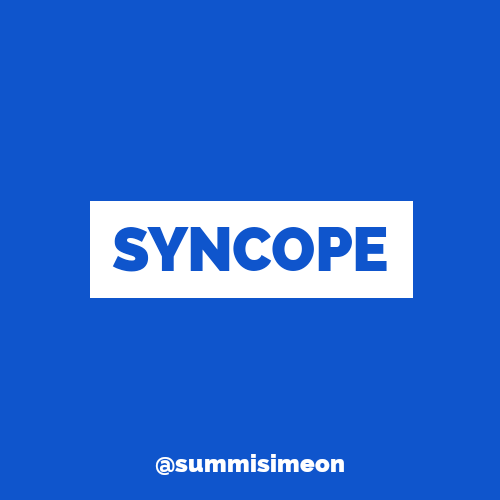"SYNCOPE" PART-2
Hello everyone,
This is our 2nd day to leanr about syncope.
As i already told about syncope and its pathophysiology in my previous post.
You can read it HERE
In this post we can learn more about syncope.
Here is the part 2 of syncope.

The causes of syncope can be divided into three general categories-
1) Neurally mediated syncope
2) orthostatic hypotension
3) cardiac syncope
In this post i will tell about Neurally mediated syncope only.
NEURALLY MEDIATED SYNCOPE
It is the complex central and peripheral nervous system reflex arc.
There is sudden,transient change in autonomic efferent activity with increased parasympathetic outflow,plus sympathoinhibition,resulting in bradycardia,vasodilation,and/or reduced vasoconstrictor tone.the resulting fall in systemic blood pressure can then reduce cerebral blood flow to below the compensatory limits of autoregulation.
Multiple triggers of the afferent limb of the reflex arc can result in neutrally mediated aulyncope. However the trigger is less easily recognised and the cause is multifactorial.under these circumstances,it is likely that different afferent pathways converge on the central autonomic network within the medulla that integrates the neural impulse and mediates the vasodepressor-bradycardiac response.
Classification of Neurally mediated syncope-
■ vasovagal syncope-
Which isprovoked by intense emotion,pain,and/or orthostatic stress.
■Situational reflex syncopes-
They have specific localized stimuli that provoke the reflex vasodilation and bradycardia that leads to syncope.
The afferent trigger may originate in the pulmonary system,GI system,urogenital system,heart and carotid artery.
Features of NMS-
In addition to features of orthostatic intolerance such as dizziness,lightheadedness and fatigue,premonitory features of of autonomic activation may be present in patients with NMS.These include diaphoresis,pallor,palpitations,nausea,hyperventilation,and yawning.
Treatment
Avoidance of provocative stimuli,and plasma volume expansion with fluid and salt are the cornerstones of the management of neurally ofnthe limbs(leg crossing or handgrip and arm tensing)may raise blood pressure by increasing central blood volume and cardiac output.by maintaining pressure in the autoregulatory zone,these maneuvers avoid or delay the onset of syncope.
Fludricortisone,vasoconstricting agent,and beta-adrenoreceptor antagonists are widely used by experts to treat refractory patients,although there is no consistent evidence from RCTs for any pharmacotherapy to treat NMS.Because vasodilation is the dominant pathophysiologic syncopal mechanism in most patients,use of cardiac pacemaker is rarely beneficial.
My special thanks to my supporters @schamangerbert @pundito @novacadian @amreshchandra @angelinafx and my friends @sonuuday and @vinaykumarr who are supporting me.
Hope u learn something from it.
There is lot of information ahead to learn about syncope.so be enthusiastic to read part-3 of syncope.
Thanks for reading
Have a nice day
Yours @summisimeon
This publication has registered to the writing contest thanks to @summisimeon.
writing contest thanks to @summisimeon.
For more information, click here!!!!
See the Minnowhelper contest conditions here